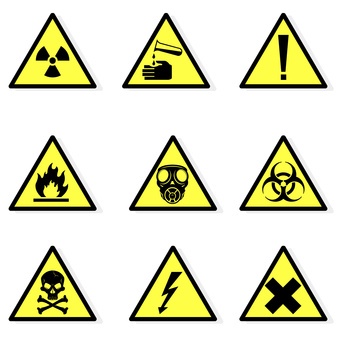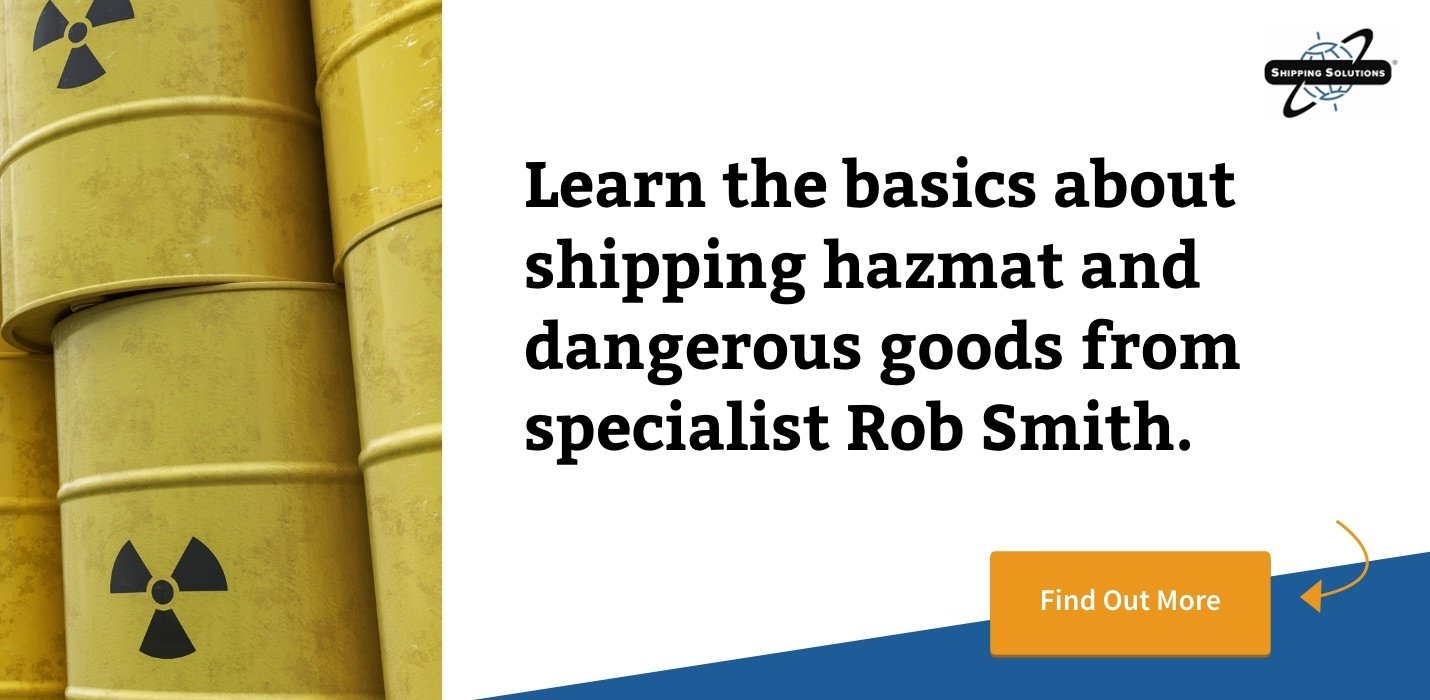The International Trade Blog Export Forms
Shipping Dangerous Goods: Basic Facts and Talking Points
On: September 20, 2016 | By:  Lisa Nemer |
4 min. read
Lisa Nemer |
4 min. read
 I recently attended two days of training on the extremely complex topic of moving dangerous goods from one place to another. While I don't know nearly enough to tell you how to actually ship dangerous goods, I did learn enough to give you some interesting cocktail party talking points, which will amaze your friends and maybe even help them understand why some things do need complex regulations.
I recently attended two days of training on the extremely complex topic of moving dangerous goods from one place to another. While I don't know nearly enough to tell you how to actually ship dangerous goods, I did learn enough to give you some interesting cocktail party talking points, which will amaze your friends and maybe even help them understand why some things do need complex regulations.
What do you mean by hazardous materials?
Hazardous materials are substances that the Department of Transportation (DOT) has determined are capable of posing an unreasonable risk to health, safety and property when transported. These items are generally either toxic, flammable or corrosive.
There are nine classes of dangerous materials: 1) explosives, 2) gases, 3) flammable liquids, 4) flammable solids, 5) oxidizing substances, 6) toxic and infectious substances, 7) radioactive material, 8) corrosives, and 9) miscellaneous.
What's the difference between hazardous materials and dangerous goods?
There is no difference. Hazardous materials is a domestic term. Dangerous goods is an international term.
Download free sample IATA and IMO Dangerous Goods forms.
What are some examples of hazardous materials?
You'd be surprised how common hazardous materials can be. A tank of helium for blowing up balloons or a tank of propane for lighting your grill are examples of regulated gases. Flammable liquids are as common as paint and nail polish remover. Flammable solids include matches. Of course, there are many other chemicals and other materials that are hazardous and not found in your home.
What does it mean to control these hazardous substances?
The regulations control how these items are packed. For example, a can that holds paint perfectly well on the ground, may buckle and leak when exposed to air pressure in the sky. The regulations also state how much of a substance can be packed in different types of containers. Also, the containers must be properly marked, so that everyone knows what type of hazardous materials are in the container, and proper paperwork must accompany the substances along with instructions in case an emergency response is required.
Aren't flammable solids safe as long as someone doesn't strike a match?
Not necessarily. Flammable solids also include substances that spontaneously combust (like magnesium diamide) and substances that are dangerous when wet (like calcium carbide and sodium). Oxidizing substances are also in this category because they give off oxygen that can stimulate other chemicals to combust. So it isn't just about carefully packing items, but making sure the wrong things aren't packed together.
How are toxic substances defined?
Toxic substances include things that will harm human health through swallowing, inhaling or contact with skin. These items are assigned to packing groups based on their oral toxicity, dermal toxicity, and inhalation toxicity. Corrosive material that is destructive to human skin is in Class 8 as well as liquids or solids that have a severe corrosion rate on steel or aluminum.
Why should I worry? I'm not going to touch toxic substances on the plane.
It's not just about you, the passenger. What about the people who load and unload cargo? If something is improperly packed, they could end up coming into contact with toxic substances. Even items that only fly on cargo planes need to be safe for the crew. For example, the miscellaneous class includes things that are not covered by other classes and may include noxious or irritating solids or liquids that could cause extreme annoyance or discomfort to crews of the planes or ships.
Who came up with of all these regulations?
The Department of Transportation (DOT) is the keeper of all transportation laws in the United States, which are found in Code of Federal Regulations (CFR) 49. Hazardous materials regulations are in Subtitle B, Chapter 1.
However, for international shipments, the regulations are actually set by two specialized agencies of the United Nations.
The first agency is the International Civil Aviation Organization (ICAO). The DOT authorizes goods to be transported internationally by air using the ICAO Technical Instructions for the Safe Transport of Dangerous Goods by Air. However, the International Air Transport Association (IATA), which is an association of airlines around the world, has taken the ICAO instructions a step further and published their own set of dangerous goods regulations that their members adhere to. These IATA Dangerous Goods Regulations are more restrictive than ICAO.
For ocean shipments, part 171.22 of the CFR49 allows for shipments to adhere to the rules of the International Maritime Organization (IMO), which is the second specialized agency of the United Nations. The IMO's goal is to create a regulatory framework for the shipping industry that is fair, effective and universally adopted around the world. They publish the International Maritime Dangerous Goods (IMDG) Code, which is used to regulate dangerous goods that are moved via ship.
In the U.S. enforcement of these regulations is done by the Federal Aviation Administration (FAA) for air shipments and the Coast Guard for ocean shipments.
Of course, these basic facts and talking points aren't intended to provide enough information so you can start shipping dangerous goods. Companies should ensure that all their employees, vendors and partners involved in handling, packing or moving dangerous goods get complete and regular training on the topic.
Thanks to Robert Smith of CARGOpak for the excellent dangerous goods training we received at Shipping Solutions.

About the Author: Lisa Nemer
Lisa Nemer leads the customer service and finance teams at Shipping Solutions, a software company that develops and sells export document and compliance software targeted specifically at small and mid-sized U.S. companies that export. If you have ever called Shipping Solutions with a question or problem you've probably talked to Lisa! Prior to joining Shipping Solutions, Lisa spent 14 years in finance and technology-related jobs for a Fortune 500 company in Minneapolis.


